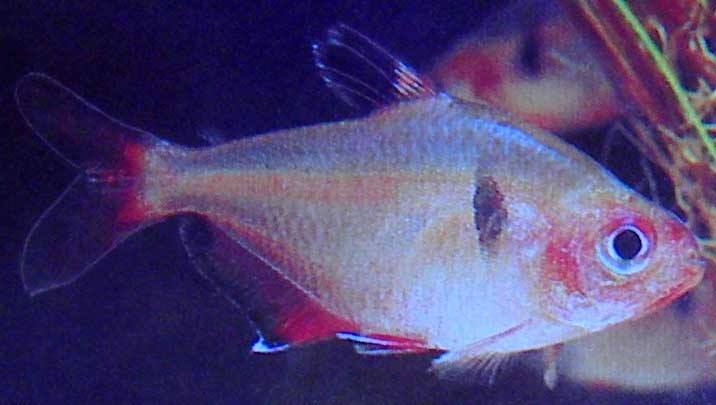Hyphessobrycon eques Cladus: Eukaryota Serpae tetras are one species of the genus Hyphessobrycon, now known as Hyphessobrycon eques. These South American tropical characids are popular aquarium fishes, often identified as "Red Minor tetras". They are found in nature in the Madeira and Guaporé regions of the Amazon river, and in upper Paraguay In the Aquarium Serpae tetras prefer water temperatures ranging from 72-79°F (22-26°C). They will generally do better and show off their best colors in soft, neutral to slightly acidic water. As with any other schooling fish, they thrive in large groups and should be kept in schools of at least 6-10 fish. The tank should be well-planted, which provides shelter and hiding spots. They have a reputation of being fin-nippers although this is disputed. If any aggression is seen in the fish, it is usually amongst themselves rather than aimed at tankmates outside of their species, especially if they are kept in large groups where they can establish a pecking order (a behavior similar to Puntius tetrazona). Their typical temperament and striking appearance (red with a black diamond on the flank) makes them an excellent addition to the community aquarium. Breeding, as with most other tetras, can be difficult due to there being few obvious differences between the genders. However, males are usually more slim and smaller than females. There is also a visible difference between the shape of the swim bladder, which can be seen above and behind the silverish abdominal cavity. To breed these fish, they should be given a small, dedicated breeding tank planted with thick bunches of fine-leaved plants such as Myriophyllum on which they can lay eggs. Filtering through peat moss can also be helpful. The eggs hatch in about a day. References H. Axelrod; G. Axelrod, W. Burgess, N. Pronek, H. Axelrod, J. Walls (2007). Dr. Axelrod's Atlas of Freshwater Aquarium Fishes (Eleventh Edition). T.F.H. Publications. p. 292. Source: Wikipedia, Wikispecies: All text is available under the terms of the GNU Free Documentation License |
|

